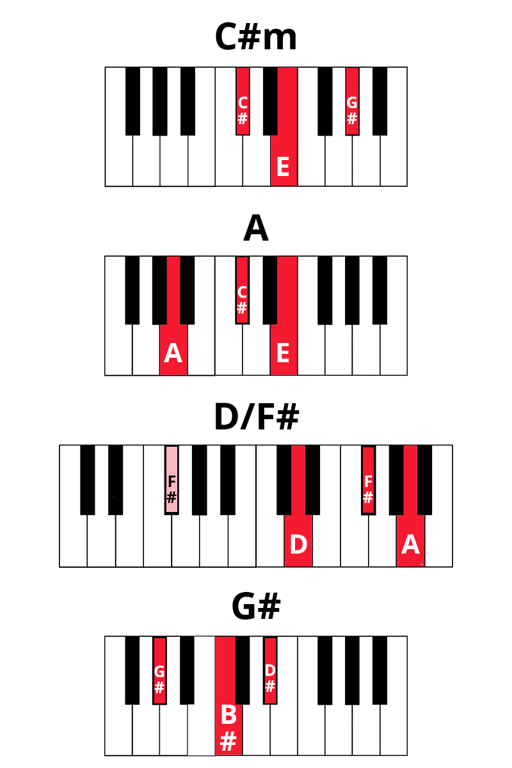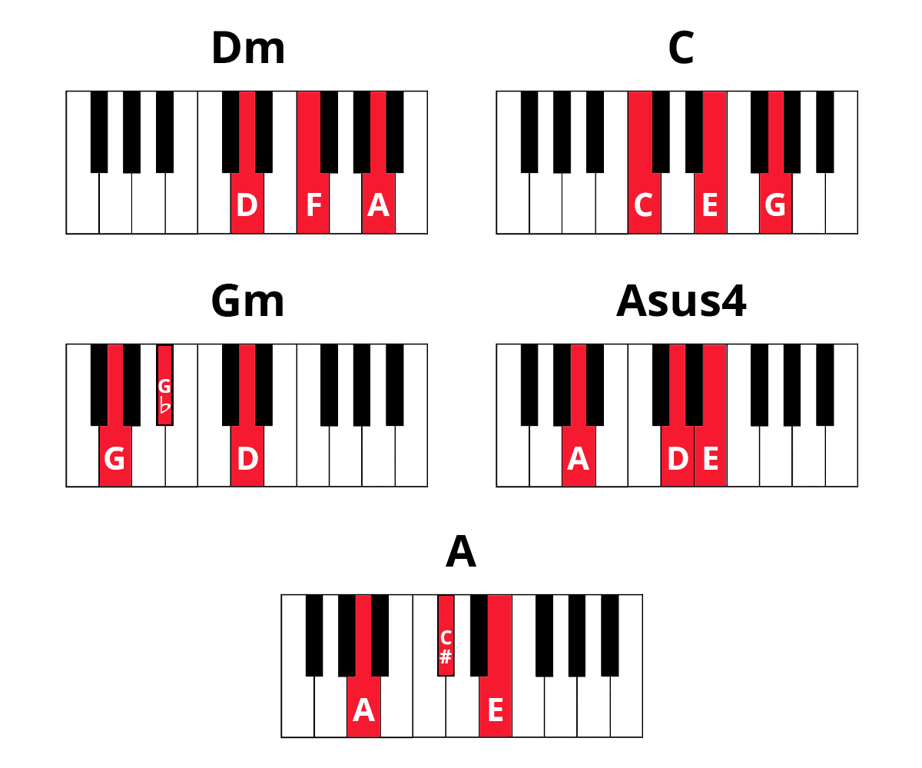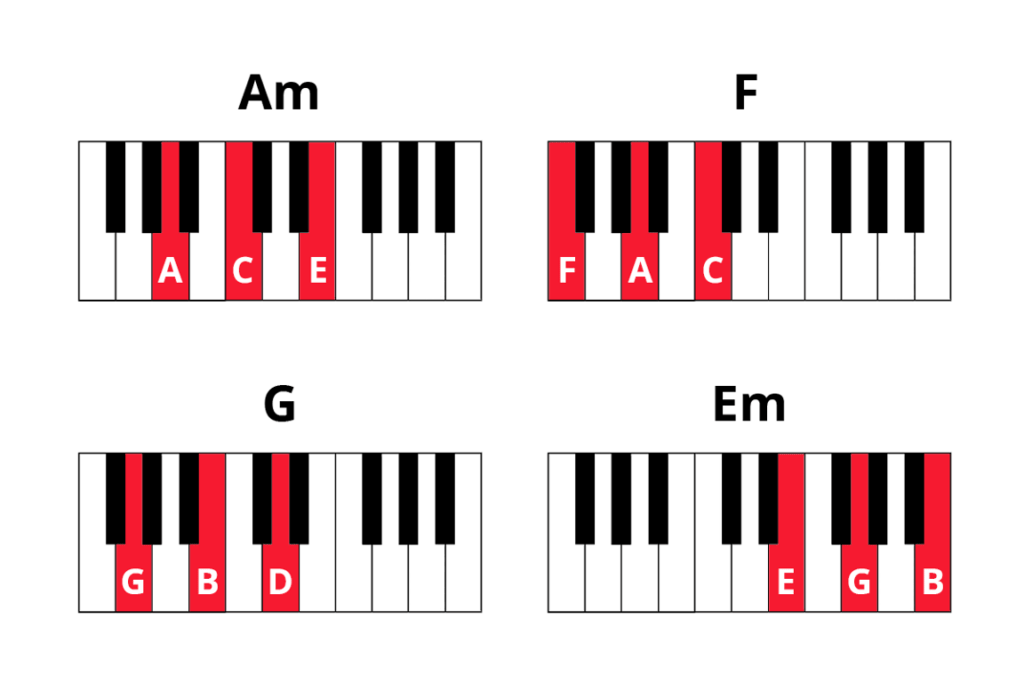Minor chords are beautiful. They’re also behind some of the most popular piano songs of all time, from Beethoven’s “Moonlight” Sonata to Hans Zimmer’s theme from Interstellar. Sure, minor keys are “sad” keys, but there’s something wonderful about them that makes them more loveable than just “sad.”
Here are three minor chord progressions you should try out! They’re not made entirely out of minor chords, but they create that lovely minor sound we know you’re looking for.
Get exclusive interviews, fascinating articles, and inspiring lessons delivered straight to your inbox.
This progression contains the chords C#m-A-D/F#-G#. In C-Sharp Minor, that’s i-VI-II-V.

D/F# is a slash chord. This means you play a D chord with your right hand over an F# in the bass with your left hand.
Try playing a broken chord pattern over this progression. Does it sound familiar? Guess what the song is and make a comment on our YouTube video!
Our second progression is a i-VII-iv-V-V progression in D Minor. (Sidenote: D Minor is an awesome minor key to learn to how to improvise in because it contains only one flat!)

Asus4 is a sus chord. This means we substitute the middle note of an A major triad (C#) with the fourth note from the root (D).
Try playing the notes E, F, and D over this progression—it sounds pretty! If your left hand sounds a little muddy, you can also substitute shell chords (playing just the root and fifth) or break your chords up into arpeggios. Another trick is to play a root-fifth-root pattern.
Does this chord progression sound familiar? It was used in the intro to Sting’s “Shape of My Heart.” (Younger music lovers: you might recognize that riff from Juice WRLD’s “Lucid Dreams.”)
Now let’s dial things down to a simpler key. This progression is the i-VI-VII-v of A Minor or vi-IV-V-iii of C major:

We used this progression in one of our most popular lessons, Create Emotion With 3 Notes. The three notes in question are E, F, and C. Play them in that order (or mix them up) over this progression, and you’ll be amazed at how beautiful this sounds!
Playing different chord progressions and improvising over them is a fantastic way to wind down after a practice session. It’ll help you relax and inspire creativity. Try one of these minor progressions next time!
Your musical journey starts today: try Pianote and get access to drum, vocal, and guitar lessons too!
Lisa Witt has been teaching piano for more than 20 years and in that time has helped hundreds of students learn to play the songs they love. Lisa received classical piano training through the Royal Conservatory of Music, but she has since embraced popular music and playing by ear in order to accompany herself and others. Learn more about Lisa.
/marketing/pianote/promos/april/banner-bg-m.webp)
We use cookies for traffic data and advertising. Cookie Policy »
/marketing/pianote/promos/april/banner-title.webp)